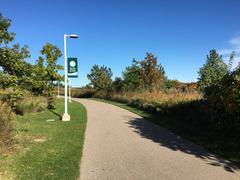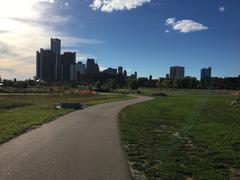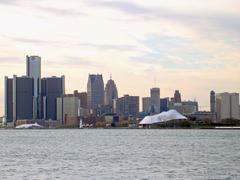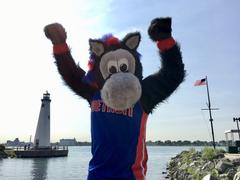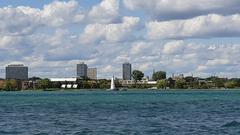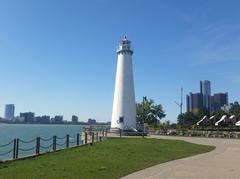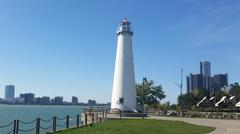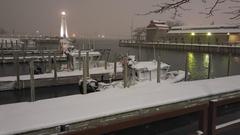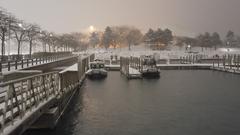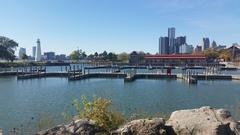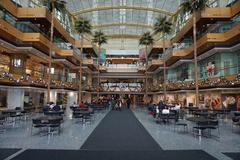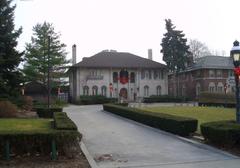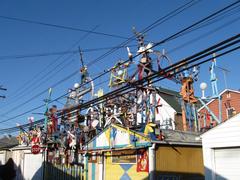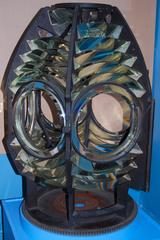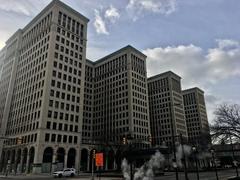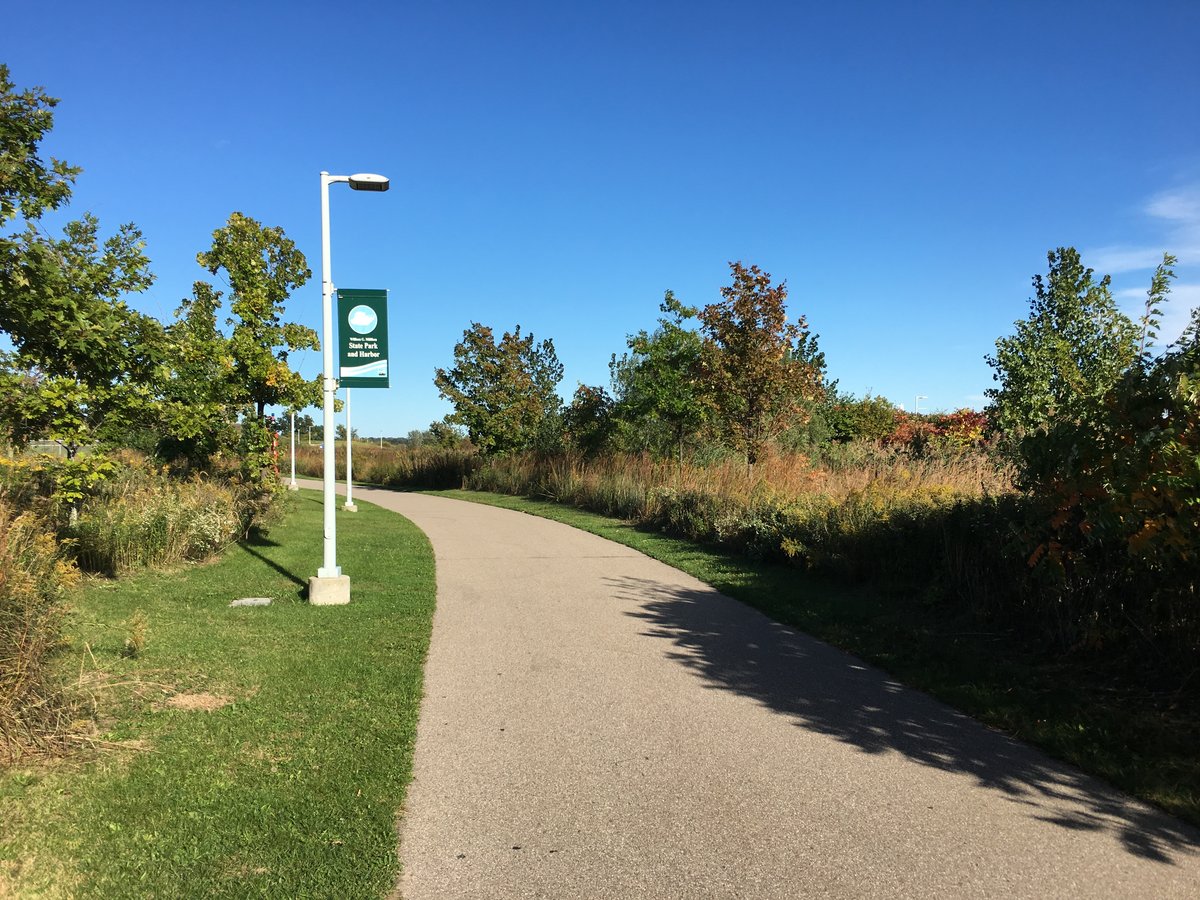
Guide to Visiting William G. Milliken State Park and Harbor, Detroit, United States
Date: 23/07/2024
Introduction
Located in the vibrant city of Detroit, Michigan, William G. Milliken State Park and Harbor stands as a testament to urban renewal and environmental conservation. Officially established in 2004, the park is named after William G. Milliken, Michigan’s longest-serving governor, who was a staunch advocate for environmental preservation and urban revitalization. This 31-acre urban oasis, nestled along the Detroit River, offers a unique blend of historical significance, recreational activities, and stunning natural beauty (Detroit Historical Society). Whether you’re interested in exploring its rich industrial past, enjoying a picnic with panoramic views, or engaging in various outdoor activities, William G. Milliken State Park and Harbor has something to offer for everyone. The park’s transformation from a polluted industrial site to a flourishing green space reflects Detroit’s resilience and dedication to creating accessible, beautiful public spaces for its residents and visitors (Detroit Riverfront Conservancy).
Table of Contents
- Introduction
- History of William G. Milliken State Park and Harbor
- Key Features and Attractions
- Visitor Information
- Travel Tips
- Special Events and Tours
- Photographic Spots
- Cultural and Environmental Significance
- Ongoing Development and Future Plans
- Conclusion
- FAQ
- References
History of William G. Milliken State Park and Harbor
Early Development and Industrial Era
William G. Milliken State Park and Harbor has a rich history that reflects the broader industrial and urban development of Detroit. The area where the park now stands was originally part of the Detroit River’s industrial waterfront. During the late 19th and early 20th centuries, this area was bustling with factories, warehouses, and shipping docks, playing a crucial role in Detroit’s emergence as a major industrial hub. Companies like the Detroit Dry Dock Company and the Detroit Shipbuilding Company operated in the vicinity, contributing to the city’s economic growth (Detroit Historical Society).
Decline and Urban Renewal
By the mid-20th century, the area began to experience decline. The rise of suburbanization, changes in industrial practices, and the overall economic downturn in Detroit led to the abandonment and deterioration of many waterfront properties. The once-thriving industrial zone became neglected and polluted, reflecting the broader challenges faced by the city.
In the 1970s and 1980s, efforts to revitalize Detroit’s riverfront gained momentum. Urban planners and community leaders recognized the potential of transforming the derelict industrial sites into public spaces that could enhance the quality of life for residents and attract tourists. This vision laid the groundwork for the creation of William G. Milliken State Park and Harbor.
Establishment of the Park
The park was officially established in 2004 and named in honor of William G. Milliken, Michigan’s longest-serving governor, who was known for his commitment to environmental conservation and urban revitalization. The establishment of the park was part of a broader initiative to redevelop Detroit’s riverfront, spearheaded by the Detroit Riverfront Conservancy (Detroit Riverfront Conservancy).
The transformation of the site involved extensive environmental remediation to address the legacy of industrial pollution. Contaminated soil was removed, and native vegetation was planted to restore the natural habitat. The park’s design aimed to create a balance between recreational spaces and natural areas, providing visitors with opportunities to enjoy the outdoors while preserving the ecological integrity of the riverfront.
Key Features and Attractions
William G. Milliken State Park and Harbor spans 31 acres and offers a variety of amenities and attractions. One of the park’s most notable features is its harbor, which provides 52 boat slips for both seasonal and transient boaters. The harbor is equipped with modern facilities, including electricity, water, and pump-out services, making it a popular destination for boating enthusiasts.
The park also features a 63-foot lighthouse, a replica of the Tawas Point Lighthouse, which serves as a prominent landmark and a symbol of Detroit’s maritime heritage. The lighthouse is a popular spot for photography and offers panoramic views of the Detroit River and the city skyline.
In addition to the harbor and lighthouse, the park includes picnic areas, fishing platforms, and a network of walking and biking trails. The trails connect to the larger Detroit RiverWalk, a 5.5-mile promenade that stretches along the riverfront, providing access to other parks, attractions, and cultural sites in the area (Detroit RiverWalk).
Visitor Information
Visiting Hours
The park is open daily from 6 AM to 10 PM.
Ticket Prices
There is no entrance fee to visit William G. Milliken State Park and Harbor. However, fees may apply for certain activities like boating.
Accessibility
The park is wheelchair accessible, with paved paths and accessible facilities. Parking is available for differently-abled visitors.
Special Visiting Rules
Pets are allowed but must be kept on a leash. Alcohol consumption is prohibited in the park.
Travel Tips
Best Times to Visit
Spring and fall offer pleasant weather and fewer crowds. Summer is ideal for boating and picnicking.
What to Bring
Comfortable walking shoes, sunscreen, a camera for photography, and a picnic basket.
Nearby Attractions
The Detroit RiverWalk, Belle Isle Park, and the Detroit Historical Museum are all within proximity.
Dining Options
Nearby dining options include the Detroit Beer Company and Joe Muer Seafood.
Special Events and Tours
William G. Milliken State Park and Harbor hosts various events throughout the year, including guided tours, seasonal festivals, and educational programs. Check the park’s official website for the latest updates on events and tours.
Photographic Spots
Lighthouse
Capture stunning views of the Detroit River and skyline.
Harbor
Perfect for photos of boats and waterfront scenery.
Trails
Great for nature photography and candid shots.
Cultural and Environmental Significance
William G. Milliken State Park and Harbor holds significant cultural and environmental value. The park’s creation is a testament to the successful collaboration between government agencies, non-profit organizations, and the community to reclaim and repurpose urban spaces for public use. It serves as a model for urban renewal and environmental restoration projects in other cities.
The park also promotes environmental education and stewardship. Interpretive signs and exhibits throughout the park provide information about the history of the Detroit River, the importance of wetlands, and the efforts to protect and restore the river’s ecosystem. Educational programs and events are regularly held at the park, engaging visitors of all ages in learning about the natural and cultural heritage of the area.
Ongoing Development and Future Plans
Since its establishment, William G. Milliken State Park and Harbor has continued to evolve and expand. Ongoing development projects aim to enhance the park’s amenities and improve accessibility for all visitors. Plans include the construction of additional trails, the installation of public art, and the development of new recreational facilities.
The park is also part of the larger Detroit Riverfront revitalization plan, which envisions a continuous greenway along the river, connecting neighborhoods, parks, and cultural institutions. This ambitious project aims to create a vibrant and inclusive waterfront that serves as a destination for residents and tourists alike.
Conclusion
William G. Milliken State Park and Harbor is more than just a recreational area; it symbolizes Detroit’s ongoing efforts in urban renewal and environmental stewardship. From its roots as an industrial hub to its current status as a beloved urban park, the transformation of this site highlights the power of community collaboration and strategic planning. Today, the park offers a wide array of amenities, from boating and fishing to picturesque picnic spots and extensive walking trails. It stands as a beacon of hope and a model for other cities looking to reclaim and revitalize their urban spaces (Michigan DNR). The park’s ongoing development plans promise to enhance its appeal further, ensuring it remains a vital part of Detroit’s landscape for generations to come. Whether you’re a local resident or a visitor, William G. Milliken State Park and Harbor provides an enriching experience that blends history, nature, and community spirit (Detroit Riverwalk).
FAQ
What are the opening hours of William G. Milliken State Park? The park is open daily from 6 AM to 10 PM.
How much is the entrance fee to William G. Milliken State Park? There is no entrance fee to visit the park. However, fees may apply for certain activities like boating.
Is the park wheelchair accessible? Yes, the park is wheelchair accessible, with paved paths and accessible facilities.
Are pets allowed in the park? Yes, pets are allowed but must be kept on a leash.
What are some nearby attractions? Nearby attractions include the Detroit RiverWalk, Belle Isle Park, and the Detroit Historical Museum.
References
- Detroit Historical Society, n.d., Encyclopedia of Detroit https://detroithistorical.org/learn/encyclopedia-of-detroit/detroit-dry-dock-company
- Detroit Riverfront Conservancy, n.d., William G. Milliken State Park and Harbor https://detroitriverfront.org/
- Michigan DNR, n.d., William G. Milliken State Park and Harbor https://www.michigan.gov/dnr/places/state-parks/southeast/milliken
- Detroit Riverwalk, n.d., Detroit RiverWalk https://detroitriverfront.org/riverwalk
